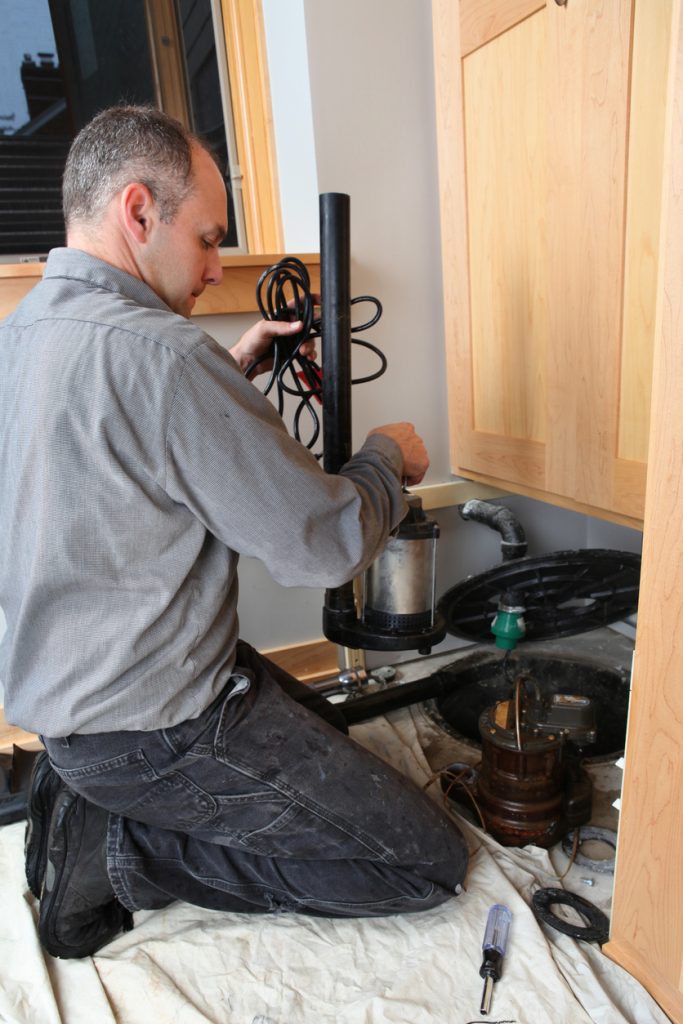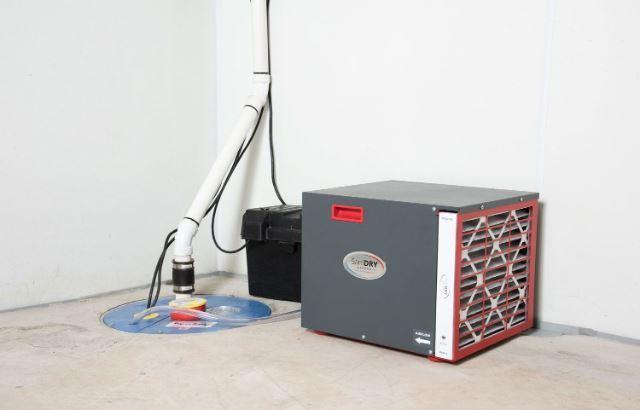Swift Steps to Servicing Your Sump Pump
Swift Steps to Servicing Your Sump Pump
Blog Article
Are you currently searching for critical info concerning Steps to Cleaning Your Sump Pump Properly?

Sump pumps are crucial components in numerous homes, particularly in areas susceptible to flooding or excessive moisture. They aid protect against water damage by successfully removing excess water from cellars or crawl spaces. Nevertheless, like any other device, sump pumps call for normal maintenance to ensure they work successfully when required the most. Cleansing your sump pump is a vital part of its maintenance, and recognizing exactly how to do it appropriately can save you from pricey repair work and potential disasters.
Introduction
Maintaining a tidy sump pump is crucial for its appropriate performance and longevity. Neglecting this essential job can bring about blockages, malfunctions, and ultimately, water damages to your property. For that reason, finding out exactly how to clean a sump pump is essential for home owners who count on these devices to maintain their cellars completely dry and safeguarded.
Signs of a Dirty Sump Pump
Knowing when your sump pump requires cleansing is crucial for avoiding possible malfunctions. Some common indications that suggest an unclean sump pump consist of weird sounds throughout operation, reduced water flow, and visible particles in the pit. If you discover any of these symptoms, it's important to cleanse your sump pump without delay to stay clear of any further problems.
Getting ready for Cleansing
Prior to you start cleaning your sump pump, it's important to take some safety and security preventative measures. Begin by shutting down the power to the pump to avoid any type of electric accidents. Additionally, put on suitable safety equipment, such as gloves and goggles, to secure on your own from dust, particles, and possible virus.
Comprehending the Sump Pump
Before diving into the cleaning procedure, it's necessary to have a fundamental understanding of just how a sump pump functions. Typically installed in a pit or container below the cellar floor, a sump pump includes a number of crucial components, including a pump, a float button, and a discharge pipeline. When water accumulates in the pit, the float button activates the pump, which after that pumps the water out with the discharge pipe, away from the structure's foundation.
Step-by-step Overview to Cleaning Up a Sump Pump
Shutting Off the Power
Begin by detaching the power supply to the sump pump to prevent any type of accidents while cleaning.
Checking for Appropriate Performance
Before re-installing the pump, perform a fast examination to make certain that the float button activates the pump correctly. Pour some water into the sump pit and observe the pump's procedure. If everything is operating correctly, you can reassemble the pump and reconnect the power supply.
Getting Rid Of Debris and Dust
Make use of a container or a scoop to get rid of any type of visible particles, dirt, or debris from the sump pit. Dispose of the particles appropriately to avoid it from clogging the pump or the discharge pipe.
Cleansing the Pump and Float Switch
When the pit is free from debris, meticulously eliminate the pump from the pit. Inspect the pump and the float switch for any kind of signs of damage or wear. Utilize a soft brush or towel to clean the surfaces and remove any type of accumulated grime.
Flushing the System
After cleaning up the pump and float button, purge the sump pit with tidy water to eliminate any type of continuing to be dust or debris. This will certainly assist make certain that the pump operates efficiently and successfully.
Upkeep Tips to Keep Your Sump Pump Clean
Along with periodic cleaning, there are several maintenance pointers you can comply with to maintain your sump pump in optimum condition:
Conclusion
Cleaning your sump pump is a critical facet of its upkeep and ensures that it operates successfully when you need it one of the most. By complying with the steps outlined in this guide and including routine upkeep into your routine, you can extend the life-span of your sump pump and protect your home from water damage.
6 STEPS ON HOW TO CLEAN A SUMP PUMP PROPERLY
UNDERSTANDING SUMP PUMPS
Your sump pump plays a crucial role in protecting your home by managing and removing excess water. It primarily functions as a “shield”, guarding your basement against the damaging effects of water accumulation. The pump is housed in a sump pit in the lowest part of your basement, and its job is to pump out any water that collects there.
During heavy rainfalls or when snow melts rapidly, water can infiltrate your basement, posing potential risks like flooding, structural damage, and harmful mold growth. Here, the sump pump springs into action, pumping out the intruding water and directing it away from your home.
SAFETY FIRST
Before cleaning, remember to prioritize safety. Disconnect the sump pump from the power source to prevent any accidental electric shocks. Also, wear sturdy gloves to protect your hands from any sharp or dirty components within the pump.
REMOVE THE SUMP PUMP
After ensuring your safety, the next step is to remove the sump pump from its pit. Doing this might require careful maneuvering as you don’t want to damage any pump components. Once removed, clean the sump pit to remove any accumulated debris or sludge.
INSPECT THE PUMP
Inspect the pump for any visible signs of wear or damage. Check the power cord, float switch, and impeller housing. If any components look worn out or damaged, consider replacing them to ensure optimal performance.
CLEAN THE PUMP
Thoroughly clean the pump with warm, soapy water. Make sure to rid it of any dirt, gravel, or other debris that might impede its performance. You can use a toothbrush to clean the small, hard-to-reach parts of the pump.
REINSTALL THE SUMP PUMP
Reinstall the pump into the sump pit Make sure it’s positioned correctly to remove the water effectively Once it’s back in place, reconnect it to the power source TEST THE PUMP
Finally, pour some water into the pit to ensure the pump works correctly. It should start automatically and begin pumping out the water; if it doesn’t, check the power source and the positioning of the pump.
Remember, while cleaning your sump pump is an essential part of home maintenance, hiring a professional plumber for a thorough inspection and cleaning at least once a year is also important. This will ensure that your pump is in optimal condition, ready to protect your home from potential water damage.
BEST PRACTICES FOR CLEANING SUMP PUMP DISCHARGE PIPES
Regular Inspection: Regularly inspect your discharge pipes, especially during heavy rainfall or snowmelt periods. Look for any signs of blockage or damage. Early detection of problems can prevent serious issues down the line. Periodic Cleaning: Over time, sediment and debris can accumulate in the discharge pipes, impeding the flow of water. Regular cleaning helps keep the pipes clear and functioning efficiently. You can use a high-pressure water jet to effectively clean the pipes. Insulation During Winter: In colder climates, discharge pipes can freeze, blocking the outflow of water. Protect your discharge pipes from freezing temperatures by insulating them with foam pipe insulation. This will ensure the sump pump can continue to discharge water even in freezing conditions. Proper Positioning: The discharge pipe should be positioned to direct water away from your home’s foundation. Improper positioning can lead to water seeping back into the basement. Ensure the pipe is long enough and angled correctly. Installation of a Check Valve: A check valve prevents water from flowing back into your sump pit after the pump has pushed it out. Installing a check valve helps maintain the efficiency of your sump pump and reduces the risk of flooding. Minimize Pipe Turns: Every curve or turn in the discharge pipe can decrease the efficiency of water flow. By minimizing turns and bends in your discharge pipe, you can increase the efficiency of your sump pump. https://www.fullspeedplumbing.com/how-to-clean-a-sump-pump-properly9999/

I am very excited about and I am assuming you enjoyed our page. Sharing is caring. Helping others is fun. Kudos for your time. Kindly come visit our website back soon.
Call Today Report this page